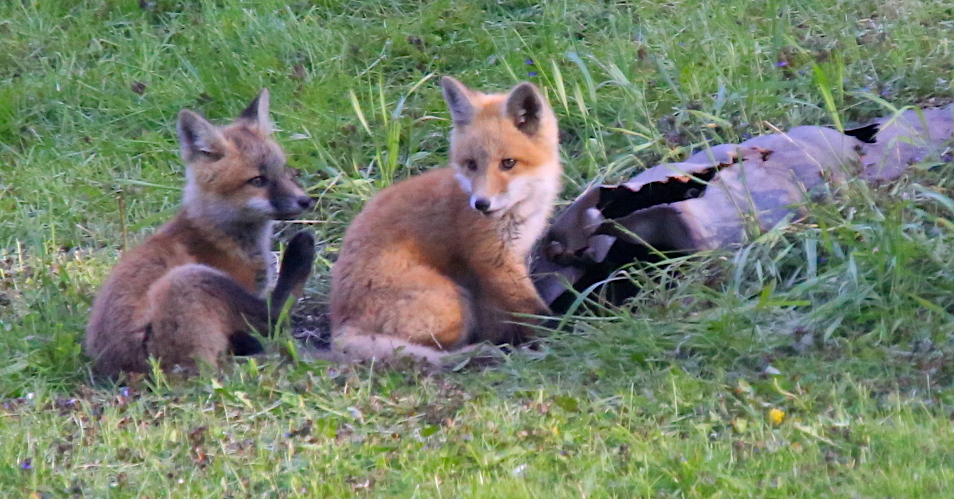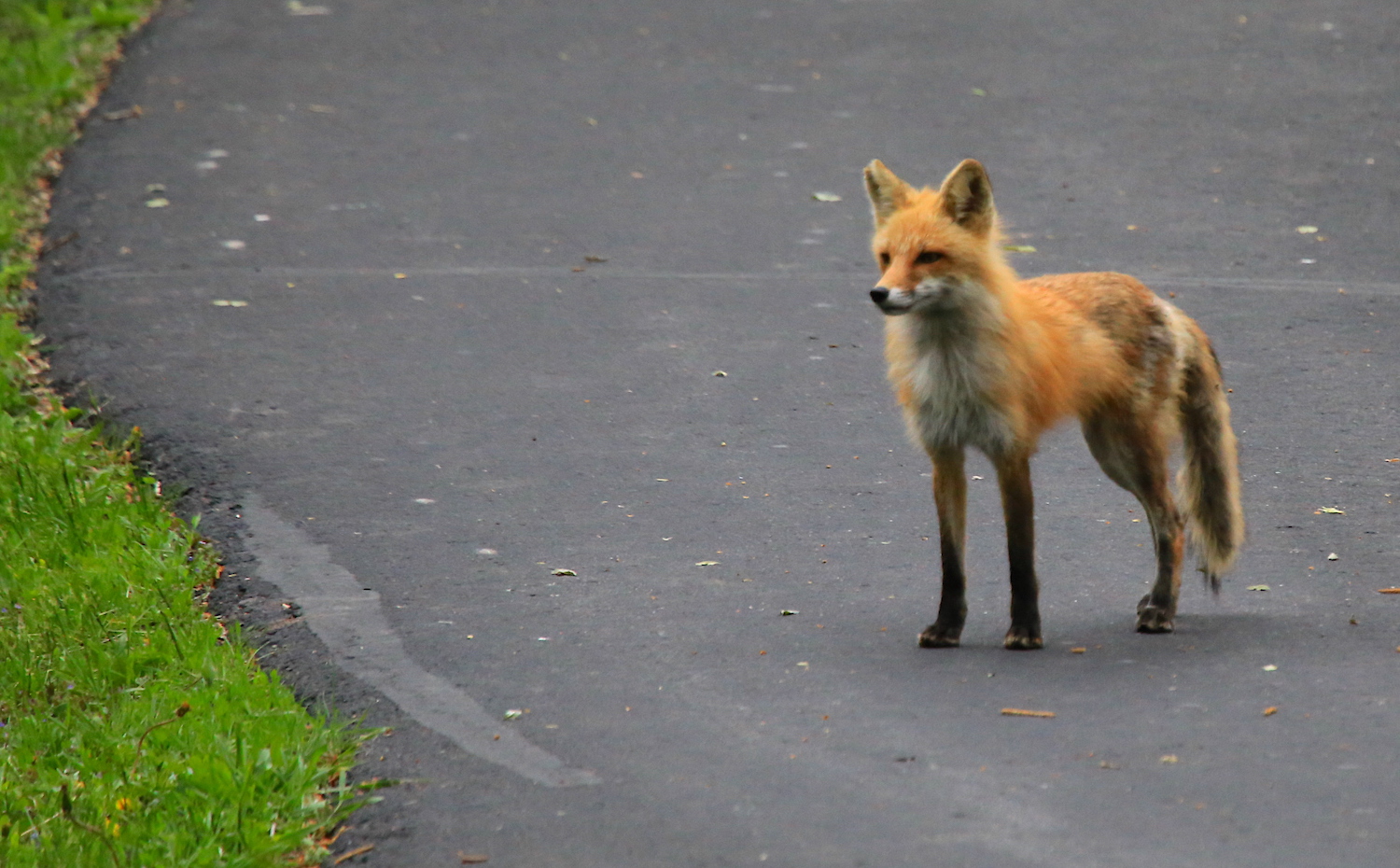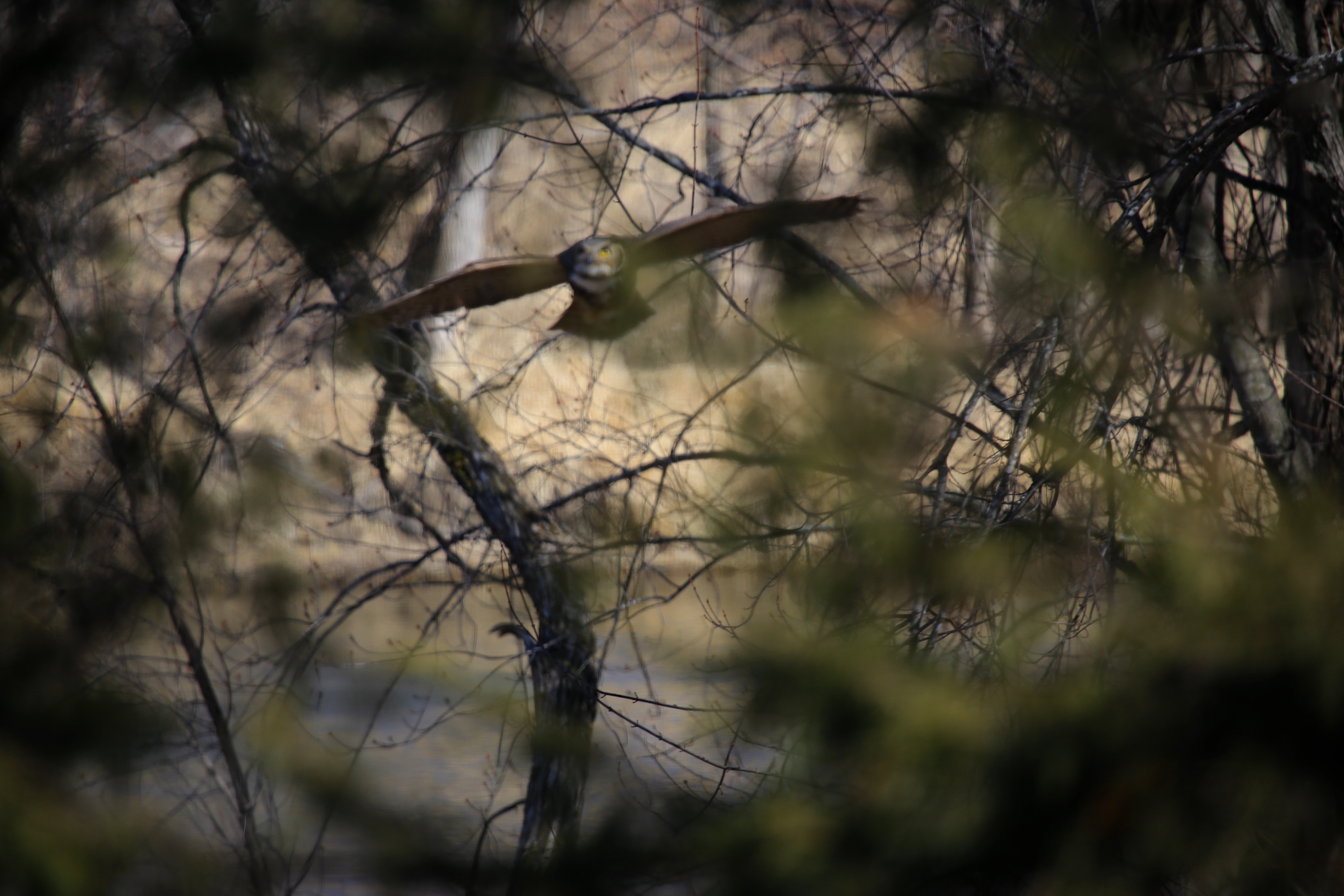With so many mice (I call them rats) and other vermin running around, it is bound to draw in predators of all sorts.
In March of 2023, we certainly have a lot of them to contend with.



Pictrona – an online storybook!
Pictrona Online Gallery
With so many mice (I call them rats) and other vermin running around, it is bound to draw in predators of all sorts.
In March of 2023, we certainly have a lot of them to contend with.

This is a male great horned owl, I’m pretty sure.

He was sitting on this branch, well aware of my presence. I guess he realizes I’m not a threat. Shadow the cat however, who follows me when I walk, was of great concern a day after I took this picture. She was in the vicinity of the nest and if I wasn’t there pointing my lens at the owl as it flew towards us it would have dive bombed the cat. As it was both parents of the young owl were making a strange “clucking” noise and showing themselves in an attempt to distract the cat.
One of these little foxes was very curious about me walking around the yard. It stayed completely out of the den until I got within about 50 feet, then it scurried into the culvert for a safer view.

It’s got a racoon face!

Guardians of the Galaxy come to mind?
With all the females and kits, there’s bound to be a male or two around. This guy was bold enough to show up mid-day to check out my chickens.


 Blue Jays are one of the elusive shots for me. There is a pair nesting near the house, so I’ve been seeing them up close!
Blue Jays are one of the elusive shots for me. There is a pair nesting near the house, so I’ve been seeing them up close!
It appears there’s only one owlet this year. I haven’t spent much time observing them, but haven’t seen more than one – here’s a peek!

Turns out there’s more than one family of foxes inhabiting our property.
This momma appears to have two kits residing about 100 yards from the other family and about 50 yards from my house (and chickens). One of these little kits was totally unafraid of me pulling my car up, getting out and taking pictures.

Feeding time around 5:30AM.
Scroll down to see the pictures of the red fox I posted earlier this year towards the end of winter – one came chasing a pheasant, the other was chasing the chaser some minutes later. I saw the pheasant cross the river, then the fox following it, then the flush and escape of the bird.
Update to May 9th 2021. Momma has three kits and is using the culvert on my driveway (as past mothers – or this mother has in the past) as a den for her rambunctious brood. I set this camera up to capture their antics, part of which turned out to be checking out the camera.

Enjoy!
Near the end of this second video you can see momma coming to check out the camera. She looks healthy – and I’m down at least two un-accounted for chickens… The survivors will be educated, and much more wary of potential predators, being pretty much every moving being they encounter, save me.
Today I was moving some downed trees and was surprised by the mother Great Horned Owl flying from the nest. I hadn’t seen her as she is hiding while sitting on her eggs. I had visited the nest tree a couple of times, but she never moved so I thought she had picked another site for her nest. This shot was taken as she returned to the nest after being scared off.
They’re back!

They’re back! Have been hearing great horned owls hooting at night again. It’s breeding season for the owls as they want their young to be ready for the onslaught of tasty young critters!
Meanwhile, the cold is here and according to the weather guessers, it’s going to be here for at least a week.
These white tail deer are yearlings, following momma around and eating young tree buds and other forage.
Two red fox showed up near the end of January. One trailed the other by about 30 minutes.
These two looked pretty healthy, unlike some I see with mange.